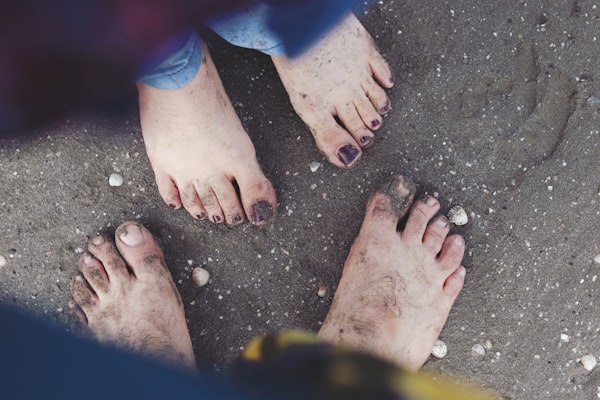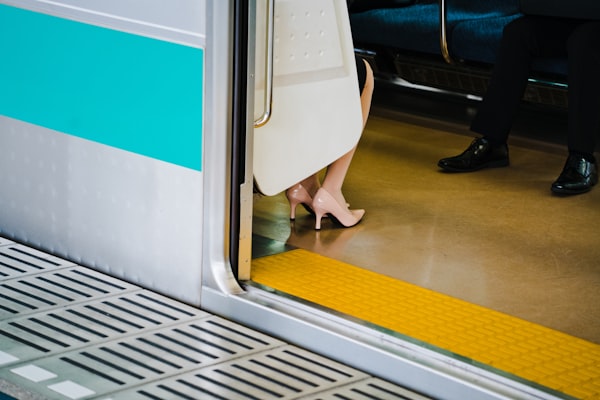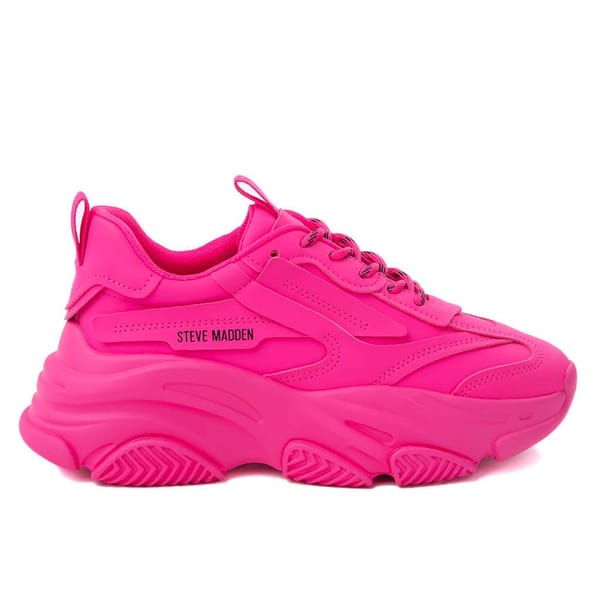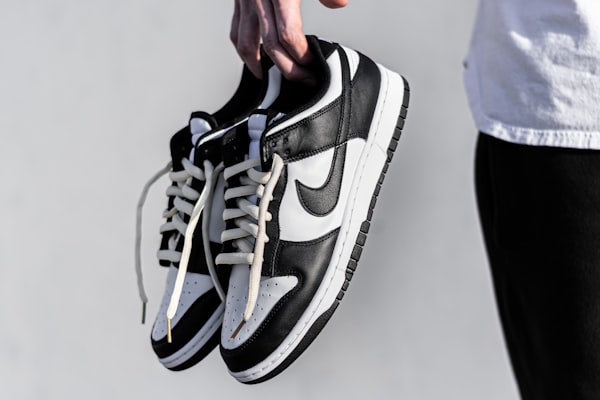Are you a runner, dancer, or just a generally active person who's recently been slowed down by an achy Achilles tendon?
Well, you're not alone. Achilles Tendonitis is a common condition that affects many people who put stress on their feet and ankles. But what's the best way to heal it?
That's where the great debate comes in. Some say rest is the ultimate cure, while others argue it's not that simple.
If you're wondering which side to take, we've got you covered. Today we'll explore both arguments and give you the lowdown on effectively healing your Achilles Tendonitis.
So sit back, put your feet up (or don't, we'll get to that), and get ready to dive into the great debate of Achilles Tendonitis healing - rest vs. activity.
What Is Achilles Tendonitis?
Symptoms of Achilles Tendonitis can include pain and stiffness in the back of the leg, swelling, tenderness, and a limited range of motion in the ankle. It is essential to seek medical attention if you are experiencing symptoms. Left untreated, Achilles Tendonitis can lead to more severe injuries, such as tendon tears or ruptures.

If you are experiencing symptoms of Achilles Tendonitis, including stiffness, pain in the back of the leg, tenderness, swelling, and limited ankle mobility, it is crucial to seek medical attention promptly. Neglecting these symptoms can result in more severe injuries such as tendon ruptures or tears.
The Argument for Rest
Resting your body when you're under the weather is standard advice, but how does it apply to healing Achilles Tendonitis? As it turns out, rest is a critical aspect of the healing process. In this section, we'll explore the argument for rest and its benefits in aiding the recovery of Achilles Tendonitis.
Resting your Achilles tendon means taking a break from any activities that can aggravate the condition. This involves staying off your feet as much as possible, avoiding activities that cause pain, and keeping your ankle elevated. Rest is essential in allowing your tendon to recover and heal naturally. The benefits of rest in healing Achilles Tendonitis include:
1. Reduced Stress on The Achilles Tendon
One of the main benefits of rest in healing Achilles Tendonitis is that it reduces the tendon's stress. Taking a break from activities that require using the tendon allows it to rest and recover. This, in turn, reduces the risk of further damage and promotes healing.
2. Promotion of Tissue Regeneration
Rest also helps in promoting tissue regeneration in the affected area. When you give your body enough time to recover, it can regenerate new and healthy tissue. This process is crucial in repairing damaged tissue, reducing inflammation, and preventing further injury.
3. Decrease in Inflammation
Inflammation is a natural response to injury and a common symptom of Achilles Tendonitis. Rest is an effective way to reduce inflammation in the affected area. Taking a break from activities that cause pain allows the inflammation to subside, reducing the overall discomfort and aiding in the healing process. Additionally, rest can reduce the need for anti-inflammatory medications and enable the body to heal naturally.
Rest is an essential component of healing Achilles Tendonitis. By reducing stress on the affected area, promoting tissue regeneration, and decreasing inflammation, rest allows your body to heal naturally and effectively.
The Argument Against Rest
While rest is a widely accepted and recommended approach for healing Achilles Tendonitis, some experts argue that it may not be the best option for everyone. These experts say that rest can be detrimental to the healing process and that physical activity may be more effective in promoting recovery. Risks of rest in healing Achilles Tendonitis include:
1. Decreased Blood Flow
One of the primary risks of rest in healing Achilles Tendonitis is the potential for decreased blood flow to the affected area. Blood carries oxygen and nutrients to the cells, which are essential for the healing process. When you rest for an extended period, blood flow to the affected area may decrease, slowing down the healing process.
2. Loss of Muscle Strength
Resting your ankle and taking a break from physical activity can cause a loss of muscle strength, especially in the calf muscles. This can be detrimental to the healing process because strong muscles are essential for supporting the affected area and preventing further injury. In addition, it may take longer to recover without muscle strength, and there is a greater risk of re-injuring the area.
3. Prolonged Healing Time
Resting for an extended period can lead to a longer healing time, as the body may not receive the necessary stimuli to promote recovery. Physical activity promotes circulation, which can help reduce inflammation, promote tissue regeneration, and support the healing process. Without this stimulation, the body may take longer to heal, resulting in a longer recovery.
The experts opposed to resting make a good argument. To avoid further injury, however, it's always best to seek advice from your doctor. They will develop a personalized treatment plan that addresses your needs, which is essential for ensuring the most effective approach to healing Achilles Tendonitis.
Who Wins the Debate?
It's not that simple. While rest is typically a beneficial aspect of the healing process, it may not be the best approach for everyone with Achilles Tendonitis. In addition, the argument against rest highlights the potential risks of decreased blood flow, loss of muscle strength, and prolonged healing time.
Our take is that physical activity and rest can be used together to create a safe and effective balance. But, of course, medical advice should always be sought to ensure the best possible outcome for your situation.
Balancing Rest and Physical Activity
Achilles Tendonitis can be a painful and frustrating condition. Still, with the right approach to treatment, it's possible to recover fully and return to the activities you enjoy. Achieving a balance between rest and physical activity is crucial for effective healing, but finding the right balance can be challenging.
1. The Importance of Balance
Balancing rest and physical activity is crucial for effectively healing Achilles Tendonitis. While rest is necessary to allow the tendon to recover, too much rest can lead to negative consequences, such as decreased blood flow and loss of muscle strength. On the other hand, physical activity can promote circulation and tissue regeneration. Still, too much activity can aggravate the tendon and slow the healing process.
2. How To Incorporate Physical Activity to Promote Healing
Incorporating physical activity into your Achilles Tendonitis treatment plan can promote healing and help prevent further injuries. However, choosing low-impact activities is essential and won't stress your Achilles tendon unnecessarily. Here are a few types of physical activity that can be effective in promoting healing:
- Swimming: Swimming is an excellent low-impact exercise that can promote circulation and help support healing. It's also a great way to build endurance and strengthen the muscles in your legs and ankles.
- Cycling: Cycling is another low-impact activity that can help promote circulation and strengthen the muscles in your legs. Cycling can also be an effective way to increase physical activity and promote healing over time gradually.
- Yoga: Yoga is a low-impact exercise that can help improve flexibility, balance, and strength. It's also an effective way to reduce stress and promote relaxation, which can aid in the healing process.
- Physical Therapy: In addition to these activities, physical therapy can effectively incorporate physical activity into your Achilles Tendonitis treatment plan. A physical therapist can help develop a personalized exercise plan tailored to your individual needs and help you build strength and endurance without putting unnecessary stress on your Achilles tendon. Physical therapy can also help prevent future injuries and ensure you use the proper form and technique.
Overall, incorporating physical activity into your Achilles Tendonitis treatment plan can effectively promote healing and prevent further injuries. However, it's essential to work with a medical professional and choose low-impact activities that won't put unnecessary stress on your Achilles tendon.
3. Recommendations for A Safe Balance Between Rest and Activity
Finding a balance between rest and physical activity is crucial for effectively healing Achilles Tendonitis. Here are some recommendations to help you find the right balance:
- Avoid Activities that Cause Pain: While physical activity is vital in promoting healing, avoiding activities that cause pain or discomfort is essential. For example, overworking your Achilles tendon can lead to further damage and delay healing.
- Gradually Increase Physical Activity: Instead of jumping right into high-intensity activities, gradually increasing physical activity over time is essential. This will help prevent further injury and allow your body to adjust to the increased demands.
- Engage in Proper Warm-Up and Cool-Down Routines: A good warm-up routine can help prepare your body for physical activity and reduce the risk of injury. A cool-down routine can also help your body recover and reduce muscle soreness.
- Wear Appropriate Footwear: Proper footwear can provide the support and cushioning your feet need to reduce stress on your Achilles tendon. This can help prevent further injury and promote healing.
- Listen to Your Body's Signals: Pay attention to your body's signals and not overdo physical activity. For example, if you experience pain or discomfort, taking a break and resting is essential.
- Seek Medical Advice and Work with A Physical Therapist: Seeking medical advice and working with a physical therapist can help you develop a personalized treatment plan tailored to your needs. A physical therapist can also help you ensure you use proper form and technique when exercising.
By following these recommendations, you can promote healing while preventing further injury. It's essential to be patient and consistent in your approach to ensure the best possible outcome.
Finding a balance between rest and physical activity is crucial for healing Achilles Tendonitis effectively. While rest is essential, physical activity can also promote circulation and tissue regeneration. Finding the right balance can be challenging, but it's possible to recover fully and prevent future injuries with the right approach. Working with a medical professional and following a personalized treatment plan can ensure the most effective method of healing Achilles Tendonitis.
The Importance of Wearing Appropriate Footwear
In addition to choosing low-impact activities and taking them slowly, it's essential to wear appropriate footwear when incorporating physical activity into your Achilles Tendonitis treatment plan. Wearing the wrong type of shoes can put unnecessary stress on your Achilles tendon, making symptoms worse and slowing down the healing process.

When choosing shoes, looking for supportive shoes that provide adequate cushioning is essential. Shoes that are too tight or too loose can also contribute to discomfort and pain. Choosing shoes that fit properly and provide enough space for your toes to move is essential.


If you're not sure what type of shoes are best for your individual needs, it can be helpful to work with a medical professional or a physical therapist who can provide guidance and recommendations. They can also help you identify any gait or foot structure issues contributing to your Achilles Tendonitis symptoms.
If you're looking for a convenient option to help alleviate Achilles Tendonitis symptoms, over-the-counter orthotic shoes, and inserts can provide the necessary support and cushion. To save you time and effort, we've researched and reviewed the best shoe models and brands for easing your Achilles Tendonitis symptoms. The best part? You can order any of our top picks, and they will be delivered to your door in a few days.
Choosing the right shoes is vital in incorporating physical activity into your Achilles Tendonitis treatment plan. By wearing appropriate footwear, you can help reduce stress on your Achilles tendon and promote healing.
Tips from Our Editors
The tips section in the articles linked above can help you find the right shoes to alleviate the pain and discomfort associated with Achilles Tendonitis. Check it out to discover pointers that can guide you in choosing appropriate footwear for your condition.
On a Final Note
So, what's the final verdict on the great Achilles Tendonitis healing debate? It turns out it's not as simple as choosing one side over the other.
Balancing rest and activity is vital to effectively healing your Achilles tendon and getting back to doing what you love.
Just like any great debate, it's all about finding a compromise. So, lace up your sneakers and hit the road (or take a break, we won't judge) - your Achilles will thank you.







